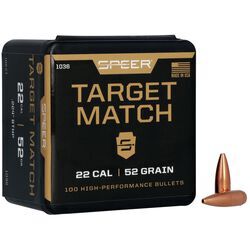Load Your Own
By Jace Bauserman
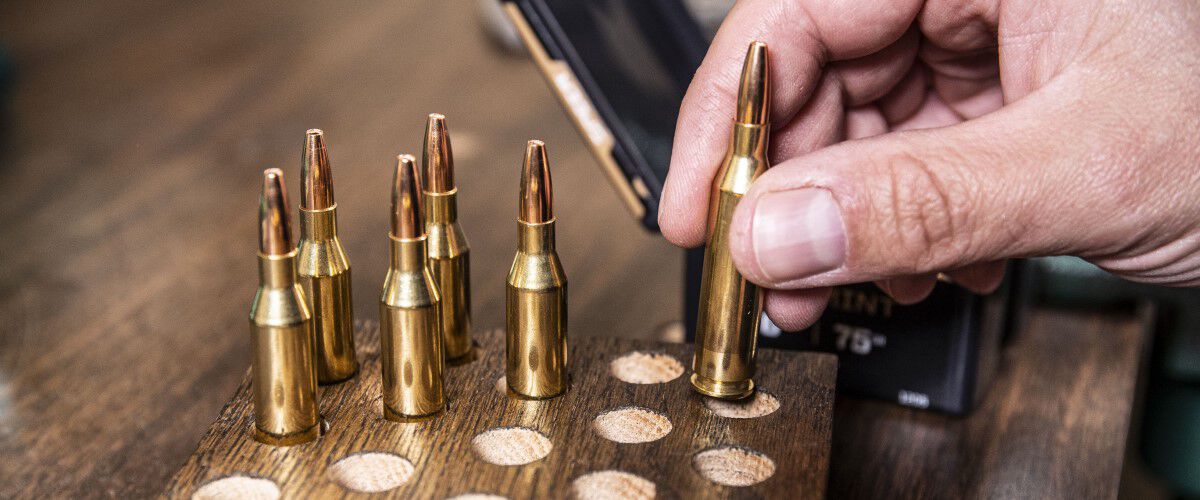
Many shooters start reloading to keep their ammo supply going strong and minimize costs during periods of high demand. But those aren’t the only reasons to reload. The process is enjoyable, relaxing and can save you lots of coin over the long haul. The problem? Knowledge. Loading precision rifle and handgun rounds requires attention to detail and disciplined adherence to the process. We’re here to help with a general guide that will help get you started.
The Process
First, you need the right equipment. The good news: You can be well on your way to saving yourself lots of greenbacks for an initial investment of around $400.
Fired brass gets dirty and you need to clean it. This process requires a few steps. First, lube the brass with a quality lubricant like RBCS Case Slick. Next, you must de-prime. To keep cost down, go with a single-stage reloading press. Press the brass case against the decapping pin to remove the old primer. A steel rod goes directly through the center of the mouth of the cartridge and pushes the spent primer out, and because the decapping and resizing die is caliber specific, it will also reform the brass back to its proper diameter. This will prevent any chambering or jamming issues.
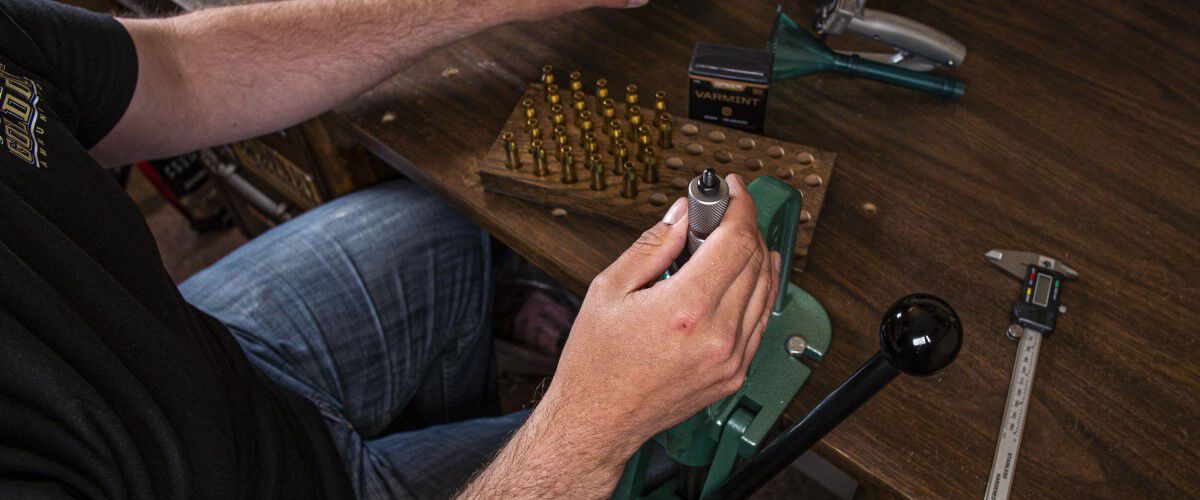
Now it’s time to tumble. Brass tumblers aren’t pricey, and you’ll need some sort of medium like ground walnut shells to put in the tumbler. Perform the tumbling process outside. The process is loud and there is a small risk of lead contamination.
Next Moves
When your brass boasts a new shine, you’re onto the next step. Bottleneck rifle cartridges will need to trim, as they tend to stretch during the resizing process. Use a case trimmer. Yes, it’s monotonous to trim brass but it’s a staple to reloading success. Finish by using a chamfering or deburring tool to remove any rough edges from the mouth and primer pocket. If you’re reloading straight-walled rifle cartridges or handgun ammo, the trimming step can be skipped.
A fresh primer will now need to be added to all prepped cartridges.
The powder comes next, and this process is always a science and never a guess. There are throngs of powder options on the market, so be sure and do your research before making a choice, and follow an established recipe like the handgun and rifle ones available on this site. Powder is measured in units of grains, which is 1/7,000 of a pound. You will need a digital powder scale that measures in grains or a traditional beam scale. Both will work. In recent years, digital scales have become less expensive and simplify the process. Just be sure your batteries are always fresh. Adjust your powder dispenser to the desired grain weight and add powder.
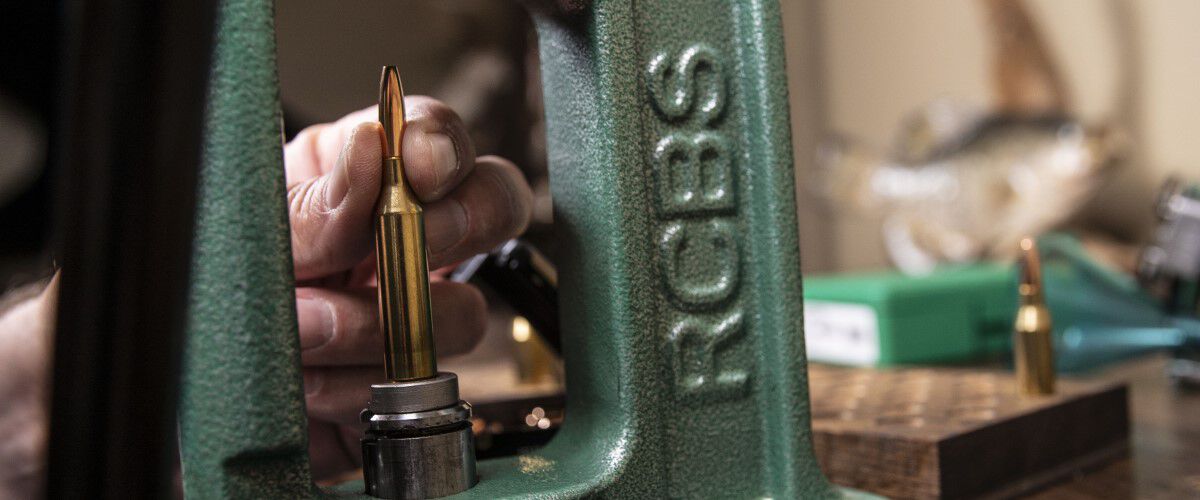
Now it’s time to insert and seat the projectile. Seat the bullet into the slightly opened case mouth to the proper depth. If you’re reloading pistol ammo or rifle ammo fed by a tube magazine, you’ll need to crimp. A crimping die will need to be added to crimp around the neck. The crimping process prevents bullet slippage during aggressive feeding common with magazine-fed firearms. With bolt-action rifles the process is much smoother.
Final Checks
Before sliding your rounds into an ammo storage container, it’s time for one final inspection. Look to make sure the primers are seated correctly, and the bullets are seated at the proper depth. You’ll also want to reinspect the brass. Brass damage can occur during the reloading process and you want to identify any dings or dents.
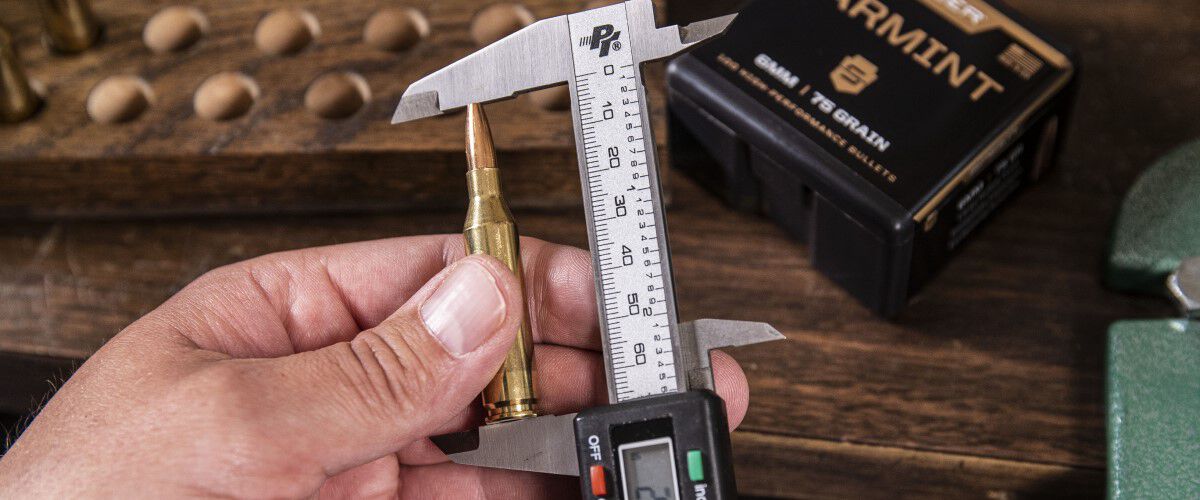
With a little practice, you’ll be well on your way to reloading quality ammunition you can depend on and always have on hand. Enjoy the process.
Target Match Rifle Bullets
Shooting at extreme range requires a special kind of bullet. Our Target Match projectiles have what it takes to go the distance thanks to a low drag profile, high ballistic coefficient, precision jacket and consistent hollow point.
Buy Now